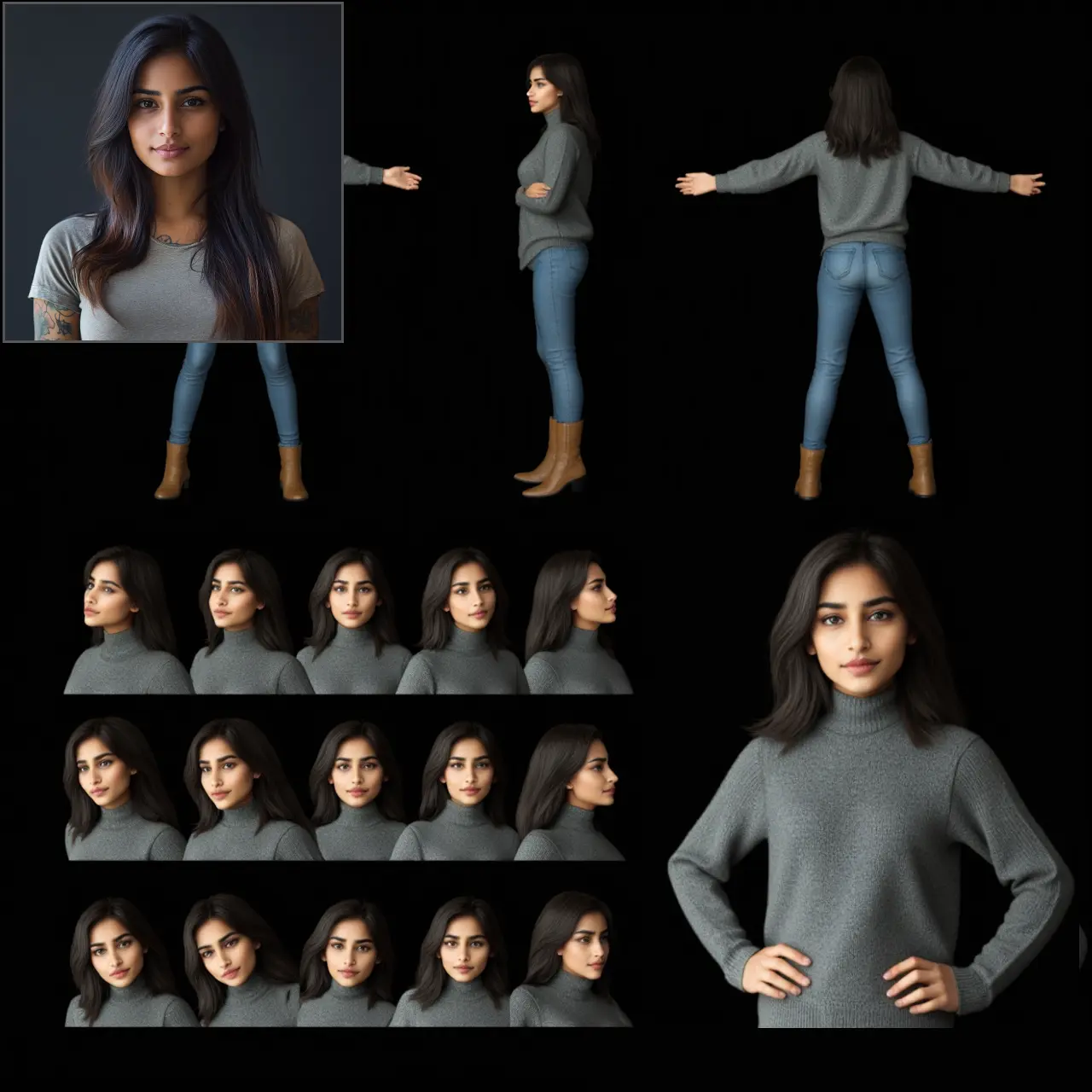ComfyUI Node: FABRIC Patch Model (Advanced)
FABRICPatchModelAdv
CategoryFABRIC
ssitu (Account age: 1974days) Extension
ComfyUI fabric Latest Updated
2024-05-22 Github Stars
0.09K
How to Install ComfyUI fabric
Install this extension via the ComfyUI Manager by searching for ComfyUI fabric- 1. Click the Manager button in the main menu
- 2. Select Custom Nodes Manager button
- 3. Enter ComfyUI fabric in the search bar
Visit ComfyUI Online for ready-to-use ComfyUI environment
- Free trial available
- 16GB VRAM to 80GB VRAM GPU machines
- 400+ preloaded models/nodes
- Freedom to upload custom models/nodes
- 200+ ready-to-run workflows
- 100% private workspace with up to 200GB storage
- Dedicated Support
FABRIC Patch Model (Advanced) Description
Enhance AI models with nuanced conditioning control using FABRIC technique for improved performance and precise outputs.
FABRIC Patch Model (Advanced):
The FABRICPatchModelAdv node is designed to enhance your AI model by integrating the FABRIC (Feedback-Aware Backpropagation for Improved Conditioning) technique. This advanced node allows you to fine-tune your model's conditioning by applying positive and negative weights to specific conditioning inputs. The primary goal of this node is to improve the model's performance by leveraging feedback mechanisms, which can be particularly useful in scenarios where nuanced control over the model's behavior is required. By using this node, you can achieve more precise and controlled outputs, making it a valuable tool for AI artists looking to refine their models.
FABRIC Patch Model (Advanced) Input Parameters:
model
This parameter represents the AI model you wish to patch using the FABRIC technique. It is a required input and ensures that the node has a model to apply the conditioning adjustments to.
null_pos
This parameter is a conditioning input that serves as a baseline for positive conditioning. It is required and helps the node understand what the default positive conditioning should be.
null_neg
This parameter is a conditioning input that serves as a baseline for negative conditioning. It is required and helps the node understand what the default negative conditioning should be.
pos_weight
This parameter is a floating-point value that determines the weight of the positive conditioning. It ranges from 0.0 to 1.0, with a default value of 1.0. Adjusting this weight allows you to control the influence of positive conditioning on the model.
neg_weight
This parameter is a floating-point value that determines the weight of the negative conditioning. It ranges from 0.0 to 1.0, with a default value of 1.0. Adjusting this weight allows you to control the influence of negative conditioning on the model.
pos_latents (optional)
This optional parameter represents the latent variables for positive conditioning. Providing these latents can help the node apply more specific positive conditioning to the model.
neg_latents (optional)
This optional parameter represents the latent variables for negative conditioning. Providing these latents can help the node apply more specific negative conditioning to the model.
FABRIC Patch Model (Advanced) Output Parameters:
model
The output of this node is the patched model. This model has been adjusted using the FABRIC technique, incorporating the specified positive and negative conditioning weights and latents. The patched model is expected to perform better and provide more controlled outputs based on the conditioning inputs.
FABRIC Patch Model (Advanced) Usage Tips:
- To achieve the best results, carefully adjust the
pos_weightandneg_weightparameters to fine-tune the influence of positive and negative conditioning on your model. - If you have specific latent variables for positive or negative conditioning, make sure to provide them using the
pos_latentsandneg_latentsparameters to enhance the model's performance. - Experiment with different combinations of conditioning inputs and weights to find the optimal settings for your specific use case.
FABRIC Patch Model (Advanced) Common Errors and Solutions:
"No reference latents given when patching model, skipping patch."
- Explanation: This error occurs when neither positive nor negative latents are provided, and the node cannot apply the FABRIC patch.
- Solution: Ensure that you provide at least one set of latents (either positive or negative) to enable the FABRIC patching process.
"Invalid weight value for pos_weight or neg_weight."
- Explanation: This error occurs when the
pos_weightorneg_weightparameters are set outside the valid range of 0.0 to 1.0. - Solution: Adjust the
pos_weightandneg_weightparameters to be within the valid range of 0.0 to 1.0.
"Model input is missing or invalid."
- Explanation: This error occurs when the
modelparameter is not provided or is invalid. - Solution: Ensure that you provide a valid model as the input to the node.
FABRIC Patch Model (Advanced) Related Nodes
RunComfy is the premier ComfyUI platform, offering ComfyUI online environment and services, along with ComfyUI workflows featuring stunning visuals. RunComfy also provides AI Models, enabling artists to harness the latest AI tools to create incredible art.




